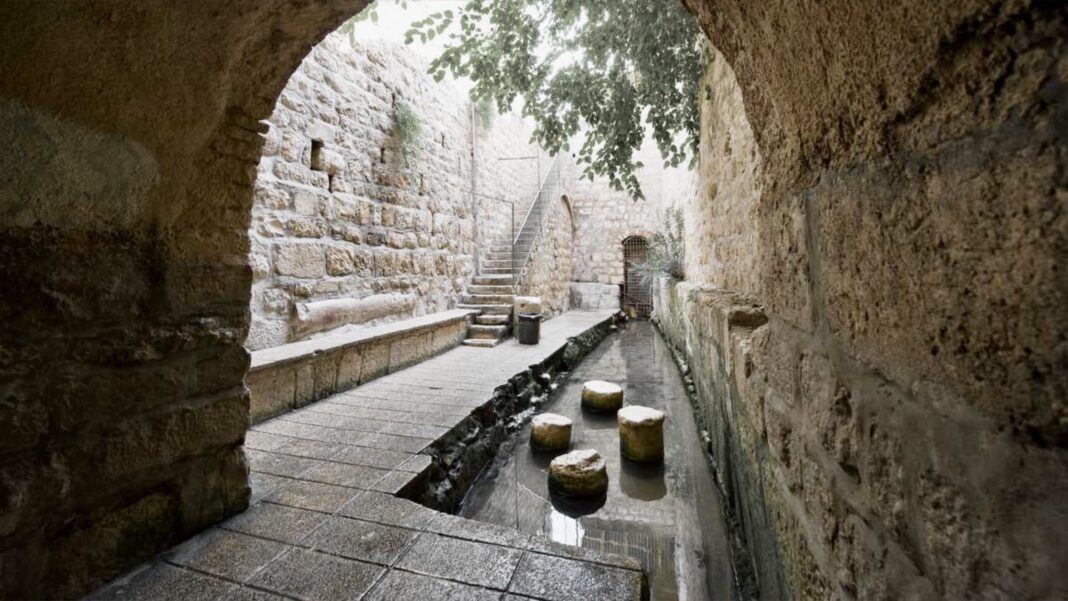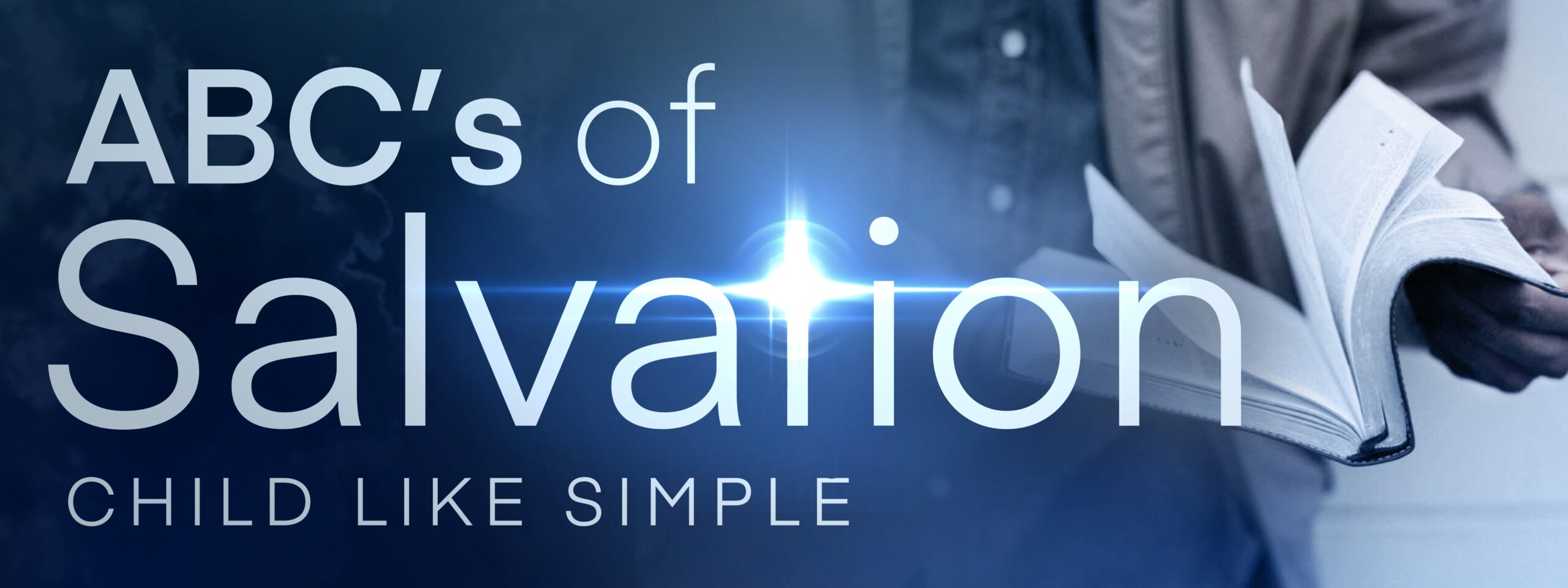Recently, I had a serious motorcycle accident which has, so far, resulted in two major surgeries. When the time is right, I will share how the Lord protected me during that accident. For now, to the glory of God I am at home and resting. How long the recovery might take is in the Lord’s hands. However, as any servant of God would attest to, it is my desire to return to active ministry as soon as possible. Naturally, a speaking ministry involves a lot of talking. However, what I have come to learn over the time of my rest and recovery is the value of listening.
In the Scriptures, we are introduced to a pool. It is mentioned only a few times in Scripture, but it is a significant place. I speak of the Pool of Siloam – reportedly the only source of freshwater within the walls of the ancient city of Jerusalem. In John chapter 9 we read of Jesus miraculously healing a man at this location who was born blind. In verses 6 and 7, we read: “When He had said these things, He spat on the ground and made clay with the saliva; and He anointed the eyes of the blind man with the clay. And He said to him, ‘Go, wash in the pool of Siloam’ (which is translated, Sent). So he went and washed, and came back seeing.”
Well, you would think the healing of a blind man would be a cause for rejoicing. However, the Pharisees were deeply upset because he was healed on the Sabbath. In verse 16 of John 9, we read: “Therefore some of the Pharisees said, ‘This Man is not from God, because He does not keep the Sabbath.'” After continuing to argue with the previously blind man, in verses 26 and 27, we read (with emphasis added): “Then they said to him again, ‘What did He do to you? How did He open your eyes?’ He answered them, ‘I told you already, and you did not listen. Why do you want to hear it again? Do you also want to become His disciples?” There is that word I want to focus on – listen. But the concept of listening is not only important in the context of John 9, but in how the tunnel to the Pool of Siloam was actually constructed.
Although the events of John 9 clearly occur during the time of Christ’s first advent, the Pool of Siloam and its accompanying tunnels were actually constructed in the 8th century BC under the direction of King Hezekiah. 2 Kings 20:20 records: “Now the rest of the acts of Hezekiah – all his might, and how he made a pool and a tunnel and brought water into the city – are they not written in the book of the chronicles of the kings of Judah?” As mentioned in the opening paragraph, the reason for its construction was to ensure fresh water was supplied to Jerusalem, even in the event the city was besieged (see 2 Chronicles 32). The Pool was fed by a tunnel Hezekiah cut through almost 2,000 feet of solid rock from the Gihon Spring. Because the Pool was fed by waters from the Gihon Spring, the naturally flowing spring water would have also qualified the Pool for use as a mikveh (ie. for ritual bathing).
After the Babylonian invasion when Nehemiah later returned to rebuild the walls of Jerusalem, we are told that he also had to repair the Pool of Siloam. Nehemiah 3:15 reads: “Shallun the son of Col-Hozeh, leader of the district of Mizpah, repaired the Fountain Gate; he built it, covered it, hung its doors with its bolts and bars, and repaired the wall of the Pool of Shelah by the King’s Garden, as far as the stairs that go down from the City of David.” Now, you might be thinking that there is no mention of Siloam. Well, in Isaiah 8:6 we are introduced to “the waters of Shiloah”. “Shelah” (in the Nehemiah passage) is a variant of “Shiloah” and both refer to the same waters – Siloam.
Estimates of the time it took to construct the tunnel vary from 9 months to 4 years. But it is not the length of time taken, but how the task was undertaken which is fascinating. In 1880 some boys swimming in the tunnel discovered an inscription engraved into the wall near the southern outlet. Later, vandals chiseled the inscription out of the wall. Eventually, the Ottoman authorities seized it and sent it to Istanbul. To this day, it remains one of the highlights of the Istanbul Archaeological Musuem and is known as the “Siloam Inscription” (also known as the “Shiloah Inscription”). The famous inscription, written in late 8th century BC script, describes how two teams dug the tunnel from opposite ends and met in the middle. The inscription reads as follows:
“… this is the story of the tunnel, while [the hewers lifted] their axes toward their counterparts, and while three cubits more were to (be hewn?), was heard the voice of a man calling to his counterpart, (for) there was [a crack?] in the rock, on the right and on the left. And on the day of [the final barrier’s] piercing, the stonecutters struck each man towards his counterpart, ax against ax and water flowed from the source to the pool for 1,200 cubits and 100 cubits was the height of the rock, over the head of the stonecutters …”
Israel has long since sought the return of the inscription from the Turkish Government but there is no evidence a deal has been struck at this point. Turkey has long insisted that the inscription is sovereign Ottoman property due to the fact that the Ottoman Empire ruled Jerusalem and much of the Middle East from 1516 to 1917. However, given that the inscription is dated to the 8th century BC, Turkey’s claims lack any sense at all. Until a deal is reached, there is a replica of the inscription located in The Israel Museum.
But you might be asking, what does this have to do with listening? Well, it has to do with the final part of the inscription – that the tunnellers were aware that there was 100 cubits of rock above them. You see, even by today’s standards, Hezekiah’s tunnel is an engineering marvel. Without the use of modern equipment, many would not have a chance of joining a winding tunnel that is 1700 feet (533 metres) long. So how did the engineers of Hezekiah’s day do it? Well, it has been theorised that they relied on acoustic sounding. That’s right – they had to listen. According to the theory, the tunnellers were guided by communications from the surface. That is, surface teams would hammer on the bedrock above, with sound travelling through natural fissures in the rock to the team below. By listening carefully to the sound of the hammering above, the tunnellers were able to ensure that they remained at the same elevation throughout the digging.
It is an important lesson. If we want to remain on track, we need to listen to the signal from above in order to guide us here below. And perhaps the fact that the word “listen” contains the same letters as “silent” gives us our first clue as to how to begin this process. Silent before God, listening to His still, small voice.













